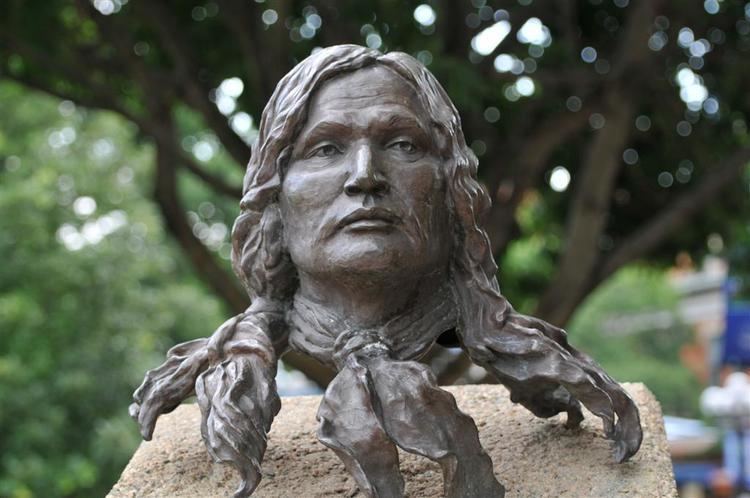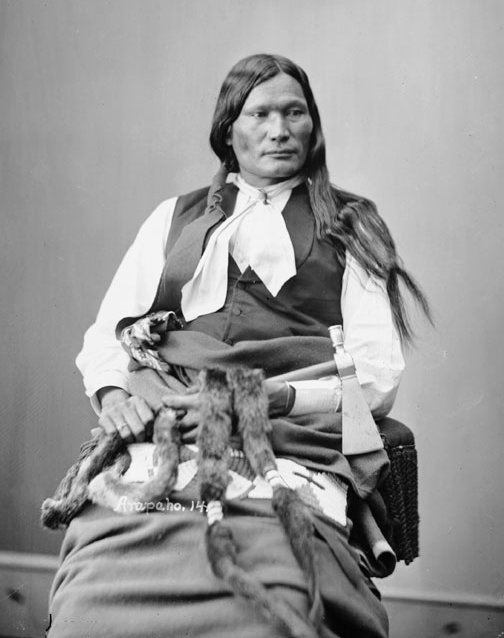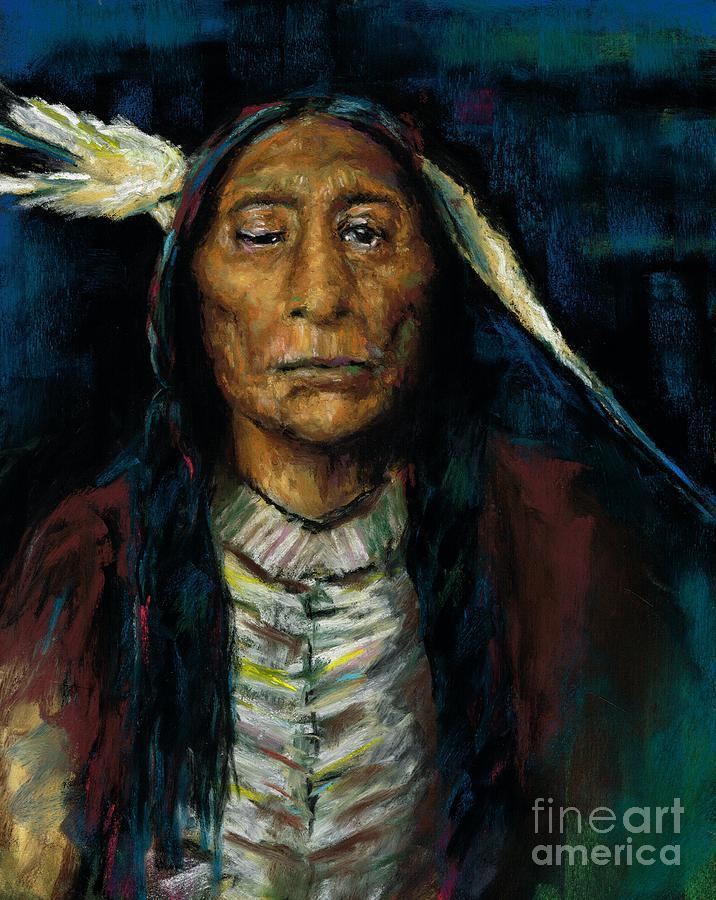Name Chief Niwot Role Leader | Died 1864 | |
 | ||
Chief niwot exhibit
Chief Niwot or Left Hand(-ed) (c. 1825–1864) was a tribal leader of the Southern Arapaho people and played an important part in the history of Colorado. Chief Niwot and his people lived along the Front Range often wintering in Boulder Valley, site of the future Boulder, Colorado. Despite breaching the borders of Arapaho territory — defined by the Fort Laramie Treaty as the area between the North Platte River and the Arkansas River — early prospectors were welcomed by Niwot in Boulder Valley during the Colorado Gold Rush. Niwot was thought to have died with many of his people at the hands of the Third Colorado Cavalry in the Sand Creek Massacre, which was one of the precipitating events that led to some three decades of Indian Wars throughout the American West. Throughout Boulder County, many places pay tribute to Chief Niwot and the Arapaho Tribe. The census-designated place of Niwot, Colorado, Left Hand Creek, Left Hand Canyon, Niwot Mountain, Niwot High School, Niwot Elementary, Niwot Ridge and the Left Hand Brewing Company are all named for him. Additionally, a main thoroughfare through Boulder is Arapahoe [sic] Avenue.
Contents
- Chief niwot exhibit
- Gipsy moon 2015 07 17 chief niwot s hot tub
- Chief Niwot and Boulder Valley
- A curse a dream and an ill fated peace
- The Sand Creek Massacre
- Alive and well
- References

Gipsy moon 2015 07 17 chief niwot s hot tub
Chief Niwot and Boulder Valley

Up through the mid-19th century Southern Arapaho hunting parties had ventured as far north as Boulder Creek. The tribe considers Valmont Butte, east of present-day Boulder, a sacred site where rituals and ceremonies were performed. It was one of these hunting parties, led by Chief Niwot, that encountered the first gold seekers to enter Boulder Valley in the fall of 1858.

Led by Captain Thomas Aikens, the gold seekers came from Fort St. Vrain, 30 mi (48 km) east. Chief Niwot and his deputies, including Bear Head and Many Whips, who were camped near Valmont Butte, immediately rode to meet them, greeted them peacefully, and promptly told him and his party to go away. An alternate version of this encounter was retold by Eliza Buford Rothrock in 1946. Her husband, John Rothrock, was a member of the Aikens party and said that the group had camped on the "17th day of October in 1858 at a place called 'Red Rocks' on Boulder Creek." This would be the area of Settler's Park at the mouth of Boulder Canyon. According to John Rothrock, Chief Niwot did not welcome the settlers at first but they "gave him gifts and fed him some good meals and told him he was our great advisor, our big chief, too. So Left Hand said we would be brothers and we could stay." Bear Head did not agree with Left Hand and did not want the settlers to build cabins on Boulder Creek. Bear Head later dreamed that a great flood had washed the Indians away, but the white man's cabin remained. Bear Head took this as a sign that the Great Spirit did not want the white man disturbed.
In her book "Chief Left Hand," Margaret Coel argues that Left Hand was no fool, and that the story about him being easily bought off by the Aikens party is probably not true. Left Hand strongly objected to the settlers building cabins, but Aikens maintained that the gold-seekers would only being wintering in Boulder Canyon, not settling permanently. Left Hand and Bear Head later returned to the Aikens camp together, and related the story of the Bear Head's dream of the flood washing away the Indians. A few months later, Aikens reneged on his promise and formed the Boulder City Town Company.
A curse, a dream, and an ill-fated peace

Chief Niwot is said to have first stated at this meeting his legendary Curse of the Boulder Valley. According to the chief, the curse was its breathtaking landscape: "People seeing the beauty of this valley will want to stay, and their staying will be the undoing of the beauty."

When Niwot threatened the gold seekers, they refused to leave and flattered Chief Niwot, plying him with exotic fare like canned beans and salt pork, and getting him drunk. Meantime, Bear Head and Many Whips returned to the Arapaho camp to raise a war party, but when they returned Niwot had made an uneasy peace with the gold seekers.
After three tense days, with the threat of a battle hanging palpably in the air, Niwot rode into Aikins’ camp once more. One of the Arapaho shamans, he told the Captain, had received a dream from the Great Spirit the night before. In the dream, the holy man saw a great flood covering the earth and swallowing the Arapahos, while the whites survived. Niwot interpreted this to mean that gold seekers would flood his homeland, and he could do nothing to stop it. Peace with the whites, Niwot realized, was the only way his people would avoid being swept away by the flood.
Thereafter, Niwot and his neighboring chief, Little Raven, who had recently welcomed white settlers to the Denver gold camp, maintained their stance of peaceful coexistence with the whites. The Arapaho chiefs were so welcoming that the newcomers named the first county in the territory after the tribe, as well as streets in both Denver and Boulder.
The initial peace did not hold. As whites continued to encroach on Arapaho land, a rash of settlements broke out along the Front Range. An 1862 Sioux uprising in the northern plains states made frontier settlements like Boulder jittery and suspicious of the Arapahos they initially thought were friends.
By 1864, a fateful year along the Front Range, tension between whites and Arapaho warriors was at a boiling point. Raids by tribes other than Niwot's people on wagon trains and outlying settlements intensified, culminating on June 11 with the brutal murder of the Hungate family on their ranch 25 mi (40 km) southeast of Denver.
Territorial Governor John Evans, convinced all the Native tribes were equally responsible, decided to be rid of the "Indian problem" once and for all. He ordered the peaceful Arapaho and Cheyenne to camp near Fort Lyons, on Sand Creek in a remote part of eastern Colorado on the plains. The governor then raised the Third Colorado Cavalry, led by Colonel John Chivington with orders to patrol the prairies for hostile Indians. Chief Niwot, along with Chiefs Little Raven and Black Kettle, did as they were told, camping peacefully at Sand Creek and continuing to refuse to make war on their white neighbors.
The Sand Creek Massacre
After months of patrolling, Chivington and the Third Colorado failed to find any hostile Native tribes on the prairie. In frustration, they headed for Sand Creek. Despite the testimony by Major Edward Wynkoop, commander of Fort Lyons, that the Native people at Sand Creek had not been raiding, Colonel Chivington and his men attacked at dawn on November 29, 1864, completely surprising the sleeping Native families.
Chief Black Kettle was sure there was a mistake, and hastily raised both a U.S. flag and a white flag of surrender. As bullets, including the only artillery barrage ever put forth by one group on another in the history of the State of Colorado, rained down on the scattering Arapaho and Cheyenne, it is reported Chief Niwot stood in the middle of the battle, arms folded, refusing to fight the white men he still believed were his friends.
Chief Niwot was mortally wounded and died a few days later. Of the ten lodges of Arapaho camped at Sand Creek, about 50 or 60 Arapahoes, only four or five escaped with their lives. No exact statistics exist on the total number of natives killed at the Sand Creek Massacre, but most historians place the number at approximately 180. And sadly, most of the dead were women, children and the elderly.
The Sand Creek Massacre was such an atrocity that President Abraham Lincoln, though in the midst of the Civil War, called for a Congressional investigation into the tragedy. Congress ruled the “gross and wanton” incident a “massacre” rather than a “battle.” Chivington was censured for his actions. Governor Evans was removed from office and Colorado was placed under martial law.
Chief Niwot and his people's massacre at Sand Creek represents a major precipitating event that resulted in three following decades of "Indian Wars" in the West.
The fighting between whites and the Arapaho continued. The Treaty of Medicine Lodge, signed in 1867, put the Southern Arapaho on The Cheyenne and Arapaho Indian Reservation in Oklahoma, but resistance continued until 1869, when General Eugene Carr, assisted by William “Buffalo Bill” Cody, finally defeated the Cheyenne and Arapaho at the Battle of Summit Springs, ending their presence in Colorado. The Northern Arapaho continued to resist white settlement seven more years until 1876, fighting General George Armstrong Custer at the Little Bighorn before finally being driven into the Wind River Reservation in Wyoming.
Alive and well?
Over the years, reports filtered out of Oklahoma that Chief Niwot did not die at Sand Creek, but rather was alive and well on the reservation. Since he made it off the battlefield alive after the Sand Creek Massacre, official accounts never confirmed his death. Photos of an Arapaho named Niwot appeared in the late 19th century, which only fueled the rumors of Chief Niwot’s survival. A 1907 Baptist Home Monthly (Vol. 29, p. 113) reports that "old Chief Left Hand" and 100 of his Arapahoes had converted that January to the Baptist faith, quoting him as reminiscing about his more warlike days.
But historians agree Niwot did not go with his people to Oklahoma. A younger warrior named Niwot, possibly a distant relative, did emerge as a leader of the Arapahos in Oklahoma, but it is now believed he was confused in news reports with the legendary chief who first welcomed the white man to the Boulder Valley. There are no known photographs of Chief Niwot, although there is a bronze sculpture interpreting his likeness in front of the Boulder Courthouse in downtown Boulder, Colorado.
